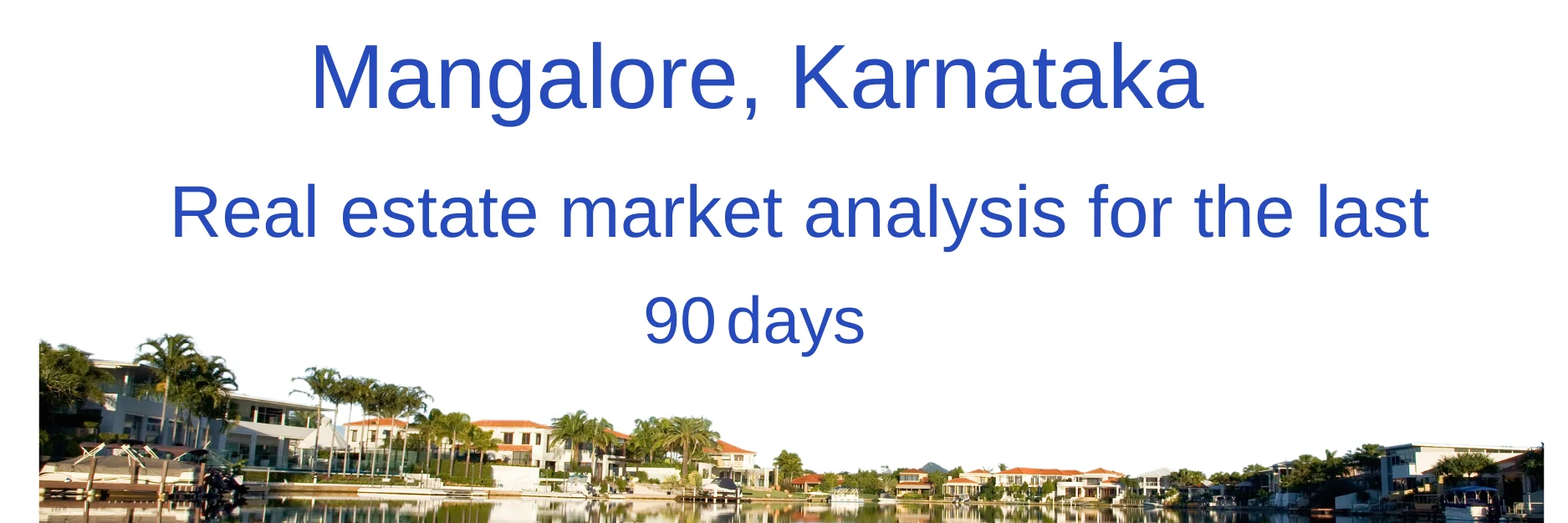Mangalore, Karnataka Real Estate Market Update (Feb 10, 2025 – May 11, 2025) [Updated on: May 2025]

Over the last 90 days, the real estate market in Mangalore, Karnataka, has been buzzing with activity and notable developments. From surging demand in specific segments to new project launches, the region is witnessing dynamic changes driven by varied factors such as NRI involvement, regulatory impacts, and innovative housing trends. This comprehensive analysis delves into all the facets shaping Mangalore's real estate landscape.
2. Market Gossip & Buzz
In recent times, the Mangalore real estate market has been stirred by a growing demand for road-facing flats. This trend is particularly driven by Non-Resident Indians (NRIs) who prioritize safety and connectivity, making such properties highly desirable. Additionally, senior citizen service apartments have emerged as the fastest-growing segment, as NRIs look to ensure safe and community-focused living spaces for their elderly family members.
3. New Projects Launched
Mangalore's real estate backdrop is rooted in its pioneering structures like the Loprabhu Court, which stands as the city’s first high-rise. Despite being built in 1978, this ground plus five-story building demonstrates remarkable longevity and full occupancy, serving as a testament to robust construction standards and enduring appeal.
4. Upcoming Projects
Looking to the future, developers are focusing on senior citizen apartments, particularly 20–30 kilometers outside Mangalore. These projects are set to offer independent living units with hotel-like amenities, ensuring comfort for residents and their visiting families alike.
5. Price Changes in Existing Projects & Localities
Mangalore has seen noticeable price adjustments, particularly for road-facing flats, which now command approximately a 10% premium due to heightened NRI interest. Additionally, apartments on upper floors of high-rises are priced ₹50–100 per square foot higher, aligning with demand for better views and ventilation.
6. Infrastructure Developments
Infrastructure advancement in Mangalore is marked by the importance of Coastal Regulation Zone (CRZ) compliance. This is vital as non-compliance poses severe legal risks, illustrated by the demolition of two towers lacking CRZ clearance. Thus, strict adherence to building regulations remains crucial for sustainable development.
7. Government Policies & Regulations
The legacy of the Urban Land Ceiling Act of 1974 plays a significant role in Mangalore's real estate history, motivating early high-rise developments to circumvent land forfeiture. Meanwhile, the Real Estate Regulation Act (RERA) offers a framework for safety with mandatory five-year structural warranties, although it is noted that the specifics of plumbing and electrical warranties may be overlooked by buyers.
8. Builder & Developer News
In Mangalore, Credai membership distinguishes credible builders who adhere to rigorous compliance standards, thereby minimizing buyer risk. While fly-by-night operators are more common in metropolitan areas, buyers are advised to beware of suspiciously low pricing schemes.
9. Housing Trends (Luxury vs. Affordable)
The demand for luxury living in Mangalore is characterized by a preference for upper-floor apartments offering views and modern amenities, while the affordable market sees buyers opting for smaller units from reputable builders to stay within budget, without compromising on quality.
10. Market Overview & Comparisons
Mangalore sets itself apart from Bangalore with stricter compliance standards and fewer title disputes—highlighting only one in four lands being problematic, as opposed to nine in ten in Bangalore. However, coastal challenges such as the detrimental effects of using saltwater sand need careful management to ensure structural longevity.
11. Expert Opinions & Market Predictions
Expert insights emphasize that longevity equates to value in real estate, as evidenced by enduring buildings like Loprabhu Court. For NRIs, investing in projects with existing bank approvals is advisable, given their preference for trustworthy and completed constructions. It's also important to avoid shortcuts in construction materials and practices, as issues like saltwater sand usage and faulty wiring can dramatically reduce a building's lifespan.
12. Conclusion
Mangalore's real estate market is thriving, fueled by strategic NRI investments, compliance-conscious builders, and innovative housing solutions. Buyers and investors are urged to prioritize RERA compliance and ensure quality materials and practices in construction. As the city continues to evolve, opportunities abound, particularly in senior-living projects and road-facing properties, promising robust returns for informed stakeholders.
Interested in buying a property?
Leave your details – we’ll call within 5 minutes.
Comments
No comments yet. Be the first!